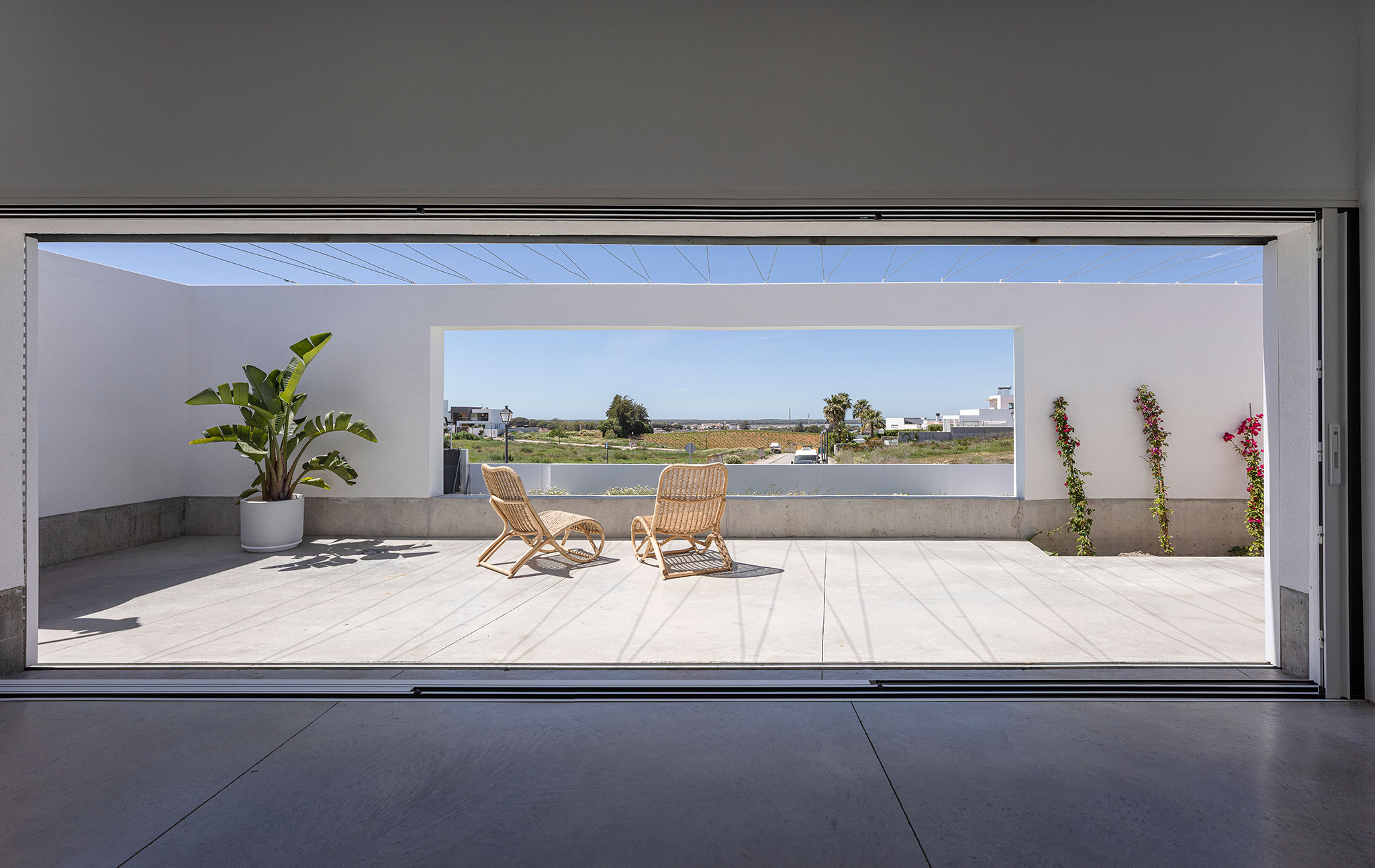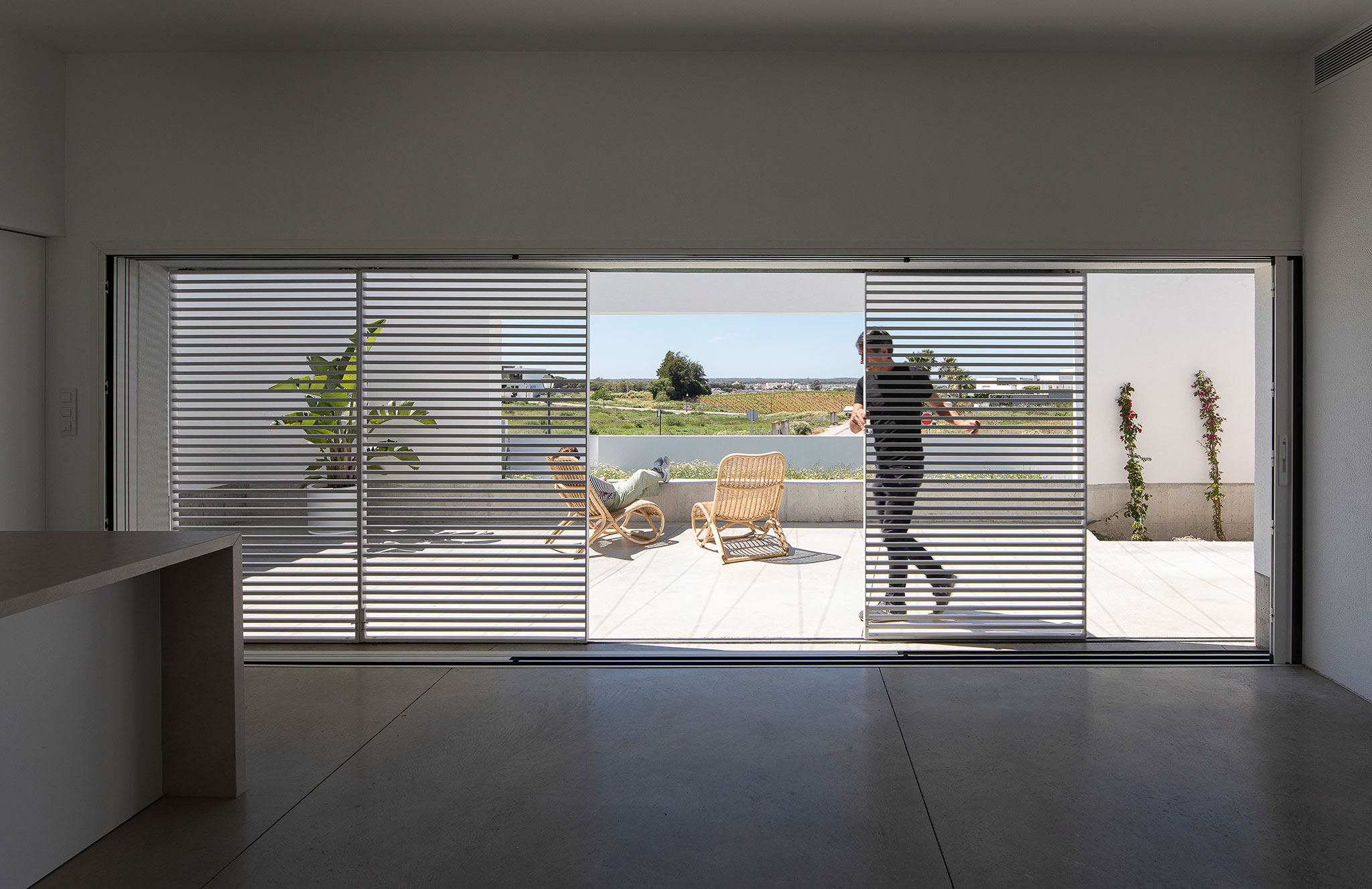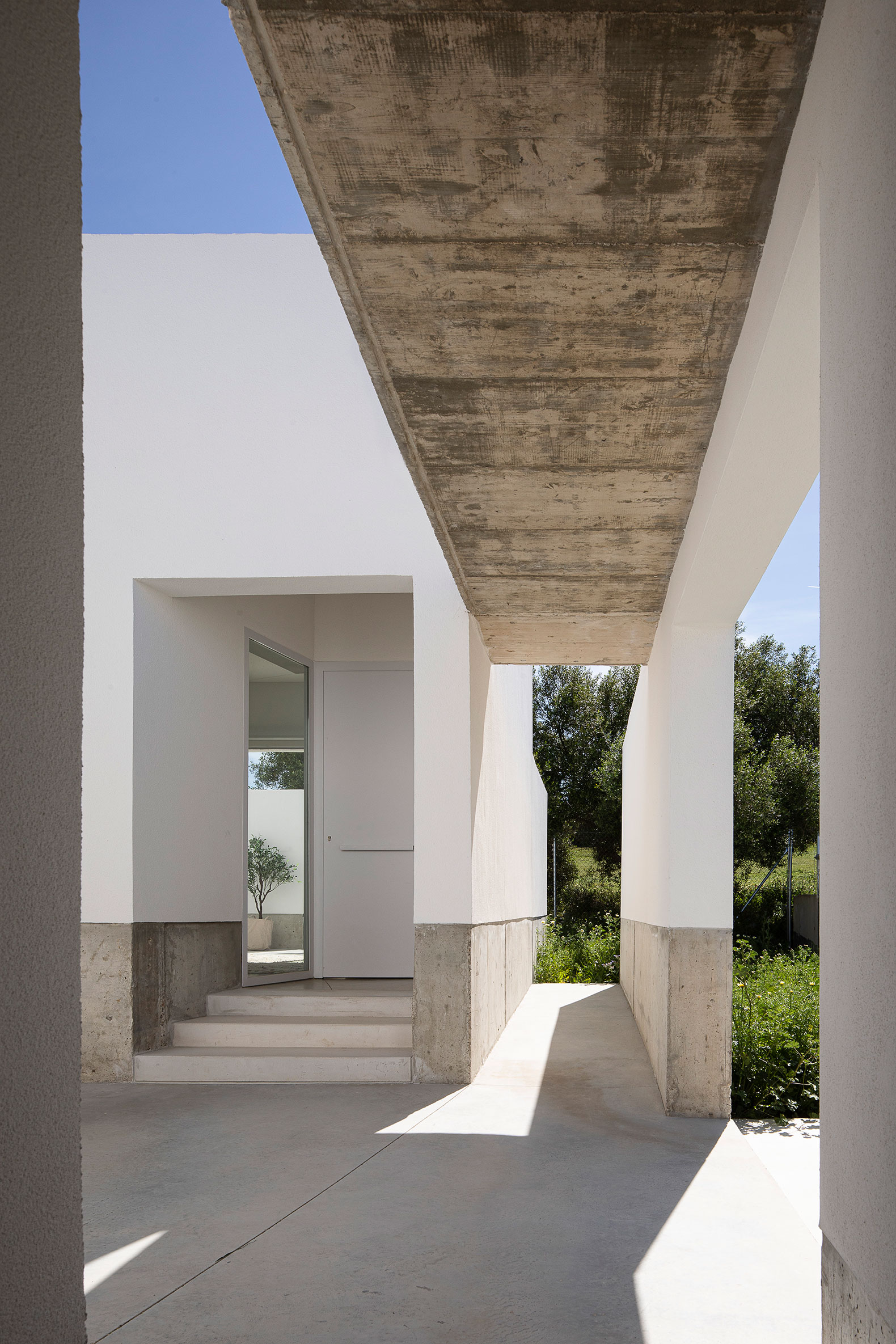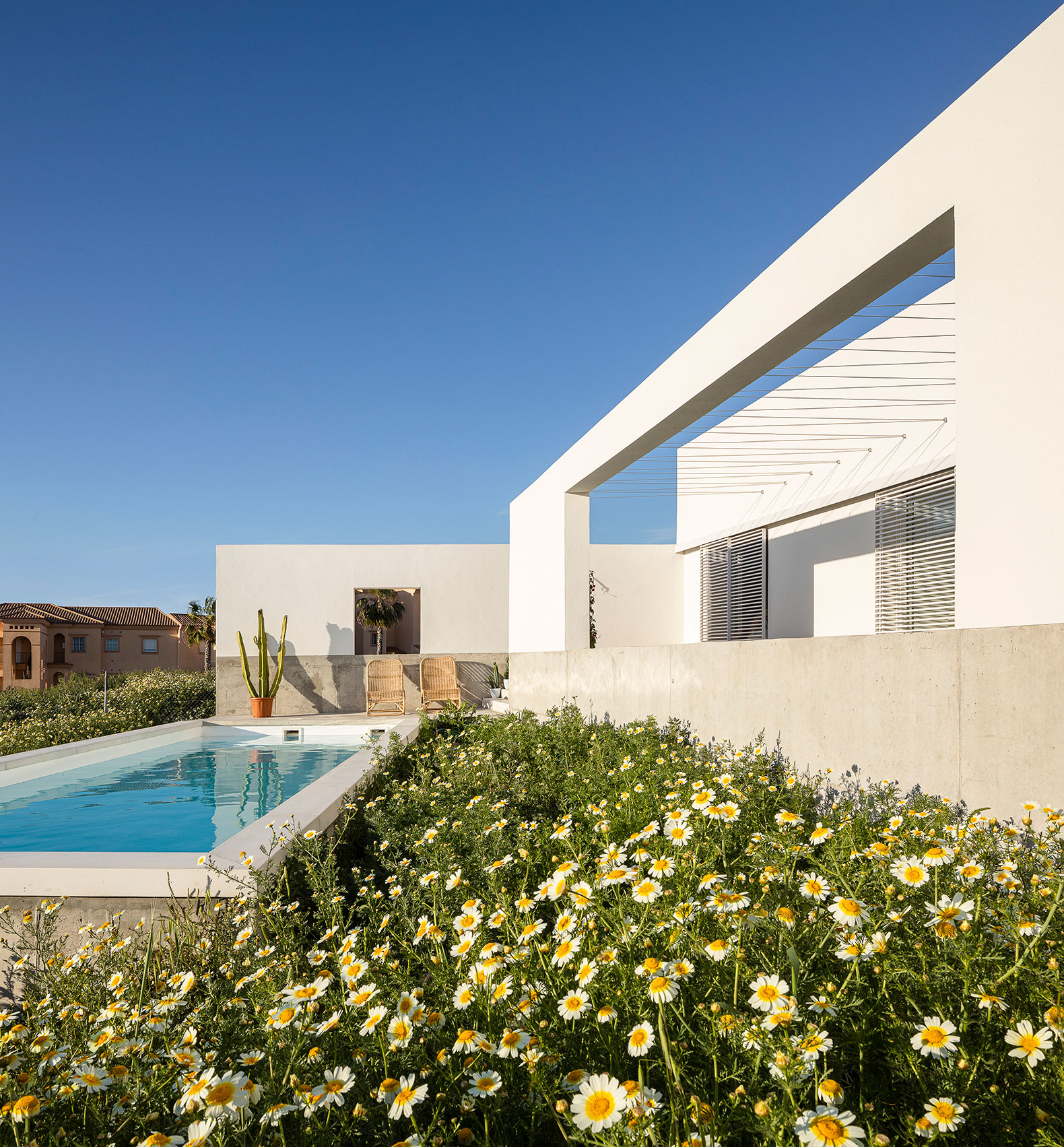The volume located to the left of the corridor houses the public areas and another volume is incorporated into it, in this case with a hipped roof, which serves as a light fixture, for the bathroom. The building complex is arranged on three different levels, the highest for the private area, the intermediate for the public and the third and lowest for the pool that opens to the horizon towards the mouth of the Guadalquivir.
Materially, the building is built using in-situ concrete, the part in contact with the ground, an element that serves as support for the three white volumes built with ceramic load-bearing walls and exterior insulation, referring to an essential lintelled construction. The entire building is built to force the visitor to look towards the river, through walls and terraces, thus making the view of the neighborhood disappear.

Two Wings House by Sol89. Photography by Fernando Alda.

Two Wings House by Sol89. Photography by Fernando Alda.
Description of project by Sol89
Nuria and Manuel move south from the north of Spain, they look for the southern light, the air of Sanlúcar, to live in a house. The land where we have to build the house is at the foot of a hill, with a slope oriented towards the distant mouth of the Guadalquivir River that appears on the horizon. The house should not be very large but allow a certain independence between rooms that they will inhabit daily and others where they can welcome family or guests or where they can have a workspace.
We understand the program as a house lived with two different intensities: the everyday house and the other less common rooms, which can coexist in proximity but do not require direct relationships. This allows us to fragment the program and articulate it through outdoor spaces, proposing a one-story house, more friendly and accessible, in continuous contact with the earth and expanding incorporating the void between the built pieces.
Thus the interior uses are resolved into two wings, the first facing west and the Guadalquivir and the second facing east and the olive grove located at the bottom of the land, two wings deployed to embrace the maximum possible space. The project proposes to explore the notion of span versus size: a house that is modest in size and that, by separating the wings, covers much more space than it occupies.

Two Wings House by Sol89. Photography by Fernando Alda.
Most of the new homes around have a single platform to tame the slope where they place a single volume, in this way, they erase the trace of the earth and from the access to the foot of the slope, the houses impose themselves excessively. We propose that the house reveal the land on which it sits without ignoring it.
The first action consists of establishing three successive terraces that adapt to the profile of the land. The highest of them houses the two rooms for sporadic use open to separate patios; Below, a second, lower platform houses a curved patio that brings together access to the different rooms and the daily house, extended into a terrace protected by a climber that doubles the interior space and expands it towards the horizon; Finally, a last level corresponds to the pool that meets the land and turns following the direction towards the river.

Two Wings House by Sol89. Photography by Fernando Alda.
The stepped terraces and the volumes that house the program respond to two different construction logics. The first is a plinth adapted to the topography in which horizontal floors and vertical walls are made with concrete in situ, this molded floor is responsible for reconciling the land with the house and domesticating the earth. Three white volumes built with ceramic load-bearing walls and exterior insulation are arranged above it, referring to an essential lintel construction whose height is reduced through flat sections to make the intermediate spaces that arise between them more friendly.
In addition to the two volumes corresponding to the daily house and the rooms for sporadic use, a third volume that houses the bathroom advances over the access patio and is rotated with respect to the parallel layout of the terraces, introducing a distortion in the floor plan mediated by the direction of the views of the Guadalquivir River. This alteration of the established geometric order tenses the entrance to the house and protects the views to the back of the access patio. A wall built at the edge of the terraces qualifies the views outside, highlighting the distant view of the river, protecting from the immediate vicinity and qualifying the intermediate spaces that are constituted as exterior rooms in which to shelter from the Cádiz wind and the southern sun.
Finally, the exterior house hollows out the interior house, diluting the limits of the domestic stay made possible by a friendly climate where the inside and the outside merge.























































